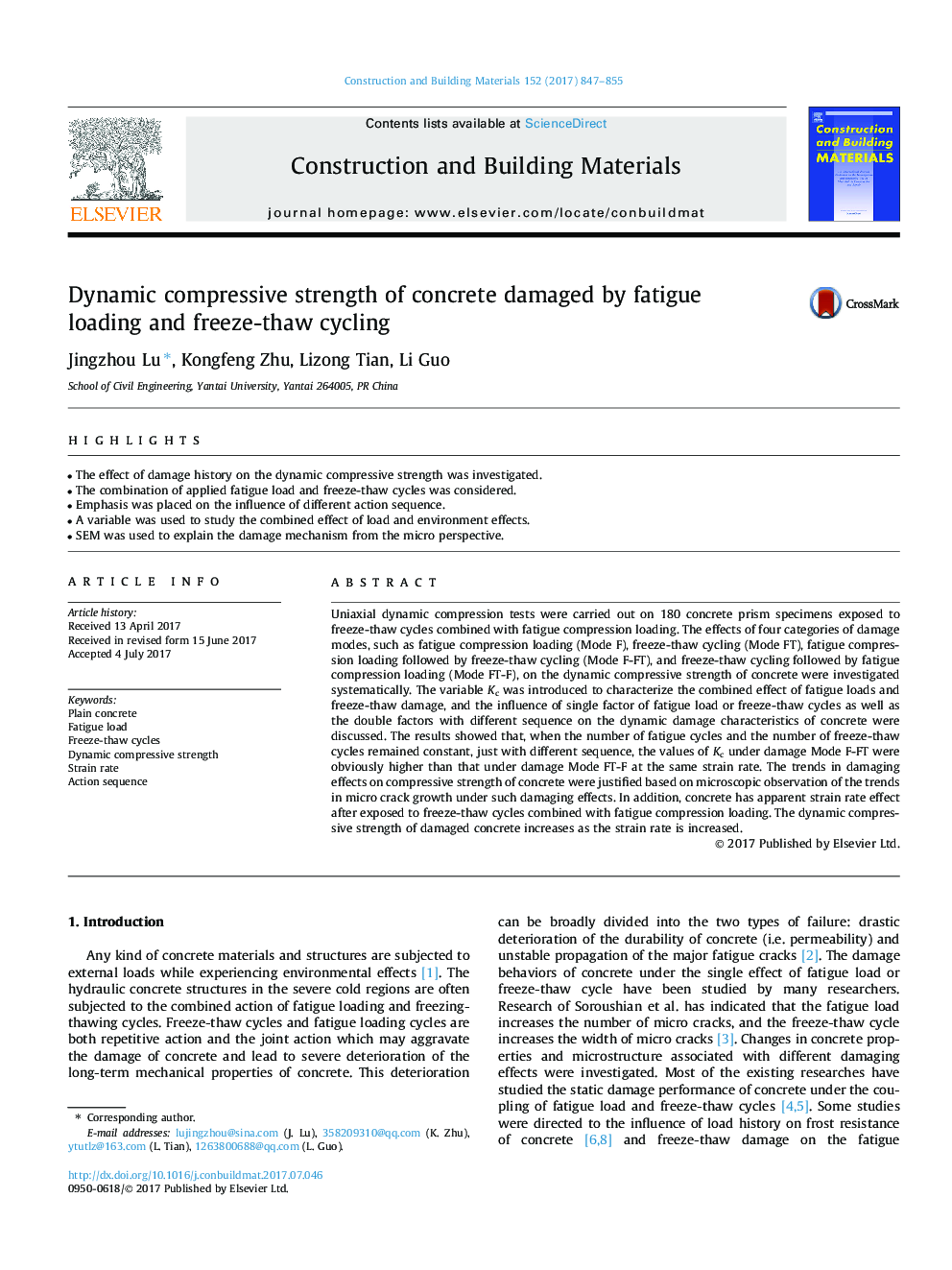| Article ID | Journal | Published Year | Pages | File Type |
|---|---|---|---|---|
| 4912816 | Construction and Building Materials | 2017 | 9 Pages |
Abstract
Uniaxial dynamic compression tests were carried out on 180 concrete prism specimens exposed to freeze-thaw cycles combined with fatigue compression loading. The effects of four categories of damage modes, such as fatigue compression loading (Mode F), freeze-thaw cycling (Mode FT), fatigue compression loading followed by freeze-thaw cycling (Mode F-FT), and freeze-thaw cycling followed by fatigue compression loading (Mode FT-F), on the dynamic compressive strength of concrete were investigated systematically. The variable Kc was introduced to characterize the combined effect of fatigue loads and freeze-thaw damage, and the influence of single factor of fatigue load or freeze-thaw cycles as well as the double factors with different sequence on the dynamic damage characteristics of concrete were discussed. The results showed that, when the number of fatigue cycles and the number of freeze-thaw cycles remained constant, just with different sequence, the values of Kc under damage Mode F-FT were obviously higher than that under damage Mode FT-F at the same strain rate. The trends in damaging effects on compressive strength of concrete were justified based on microscopic observation of the trends in micro crack growth under such damaging effects. In addition, concrete has apparent strain rate effect after exposed to freeze-thaw cycles combined with fatigue compression loading. The dynamic compressive strength of damaged concrete increases as the strain rate is increased.
Related Topics
Physical Sciences and Engineering
Engineering
Civil and Structural Engineering
Authors
Jingzhou Lu, Kongfeng Zhu, Lizong Tian, Li Guo,
